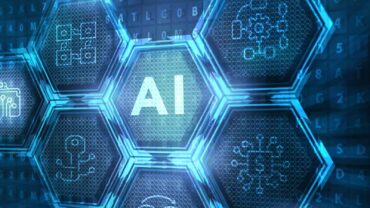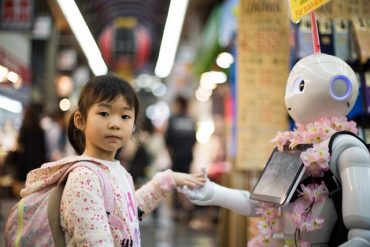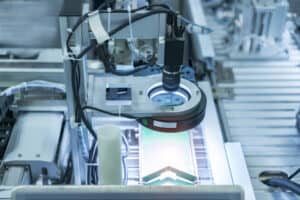
Integrating AI into machine vision is rapidly becoming a critical component in the manufacturing sector, according to an ABI Research report
Machine Vision (MV) solutions have become vital for manufacturers in an increasingly competitive and regulated environment. Driven by stringent regulatory requirements, innovative manufacturing techniques, and severe labor shortages, the industry is turning towards technology for solutions. ABI Research’s comprehensive report on this subject highlights the growing importance of artificial intelligence (AI) in enhancing quality control within manufacturing.
The Rising Importance of AI in MV
The integration of AI into MV solutions represents a significant shift in manufacturing. ABI Research forecasts remarkable growth in the quality control machine vision market, projecting an increase from US$2.3 billion in 2023 to US$7.2 billion by 2028. This growth trajectory underscores the critical role of AI in modern manufacturing, driven by its ability to augment and enhance traditional MV systems.
Advantages of AI in Machine Vision
Integrating Artificial Intelligence (AI) into Machine Vision (MV) in manufacturing brings a host of transformative benefits, reshaping the landscape of industrial quality control. One of the biggest advantages is the enhanced accuracy and precision in identifying defects. AI algorithms excel in processing visual data, drastically reducing errors and ensuring a high level of precision. This accuracy is critical in maintaining consistent quality standards across products.
Another key advantage is the dramatic increase in inspection speeds. AI-driven MV systems can analyze visual data in real time, enabling faster inspection rates without compromising quality. This high-speed processing is essential for maintaining efficient production lines and supporting high-throughput manufacturing environments.
AI also offers remarkable adaptability and flexibility. It can learn from new data, making it adaptable to different products or manufacturing settings. This learning capability allows for customization to specific manufacturing needs and requirements, making AI an incredibly versatile tool in the manufacturing arsenal.
Moreover, the integration of AI in MV leads to significant cost efficiencies over the long term. By reducing material wastage and minimizing the need for manual inspection, AI in MV can lead to considerable labor cost savings. Additionally, it enhances safety and ergonomics by reducing the need for human intervention in potentially hazardous environments and alleviating the strain of repetitive tasks on workers.
The scalability of operations is another crucial advantage. AI-driven MV systems can be easily scaled or adapted for different production lines, offering flexibility in responding to changes in product design or manufacturing methods. This scalability is complemented by the wealth of data-driven insights that AI provides. By analyzing vast amounts of data, AI can identify trends and patterns, aiding in predictive maintenance and improving manufacturing efficiency.
Lastly, adopting AI in MV can offer manufacturers a competitive advantage. It positions them as leaders in innovation and technology, allowing for quicker adaptation to market demands and changes. The environmental benefits further enhance this competitive edge, as AI-optimized processes contribute to more sustainable manufacturing practices through resource optimization and energy efficiency.
Key Takeaways:
- Enhanced accuracy and precision in defect detection.
- Increased inspection speeds for efficient production.
- Adaptability and flexibility to different manufacturing settings.
- Long-term cost savings and improved safety.
- Scalability and rich data-driven insights.
- Competitive advantage and environmental benefits.
See also: Hybrid Augmented Intelligent Vision Systems Process in Real Time
Challenges and Limitations in Integrating AI with Machine Vision
Despite the advantages, integrating AI with MV in manufacturing is not without its challenges. One of the most daunting is the high initial cost and the uncertainty regarding the return on investment (ROI). The deployment of AI-MV systems requires significant capital investment in advanced hardware and software. Moreover, manufacturers often face uncertainty about the ROI, especially when the benefits, such as increased productivity or reduced defects, may take time to become apparent.
Another significant challenge is integrating these advanced systems with existing manufacturing infrastructures. Compatibility issues with legacy equipment and software can pose considerable obstacles, and reconfiguring existing workflows to accommodate AI-MV systems can disrupt production processes.
The need for technical expertise is another hurdle. There is often a shortage of skilled personnel capable of operating and maintaining these sophisticated systems. Additionally, the rapid evolution of AI technology necessitates continuous training and upskilling of the workforce, adding to the resource strain.
Data privacy and security concerns also loom large. The increased reliance on data for AI-MV systems raises issues of data vulnerability and the need for compliance with stringent data protection regulations. Moreover, maintaining system reliability and the complexities of diagnosing issues in AI-driven systems can lead to production delays and quality issues.
Scalability and flexibility issues also present challenges. AI models might struggle to adapt quickly to changes in product designs or manufacturing processes, requiring additional investment and retraining. The lack of standardization in AI and MV technologies can lead to interoperability issues and dependency on specific vendors, limiting the flexibility of manufacturers.
The ‘black box’ nature of AI is another critical challenge. The lack of transparency in AI decision-making processes can lead to trust issues, especially in industries where quality control and regulatory compliance are paramount. This is compounded by the dependence on quality data for training AI models. Inadequate or biased data can lead to inaccurate AI predictions, undermining the system’s effectiveness.
Key Takeaways:
- High initial costs and ROI uncertainty.
- Complex integration with existing systems.
- Need for technical expertise and continuous training.
- Data privacy, security concerns, and system reliability issues.
- Scalability and flexibility challenges.
- Lack of standardization and transparency in AI decision-making.
The MV Ecosystem and Key Players
The ecosystem of MV, as detailed in the ABI report, includes a wide range of vendors. There are specialists like Neurala, Intel, and Google focusing on AI components, and others like Sony and Nikon, known for their camera technologies. The report also highlights companies offering comprehensive end-to-end MV solutions, such as Aqrose Technology and Cognex, illustrating the diverse approaches and specializations within the industry.
Market Trends and Manufacturer Preferences
ABI Research’s findings also shed light on the varying preferences among manufacturers regarding MV solutions. Budget constraints and build complexity are key factors influencing these decisions. The report suggests that smaller manufacturers tend to prefer off-the-shelf solutions for their cost-effectiveness and simplicity. In comparison, larger manufacturers may opt for customized systems, integrating best-of-breed components for more complex requirements.
Future Outlook and Innovations
Looking ahead, the report by ABI Research indicates a bright future for MV and AI in manufacturing. Ongoing innovations promise to enhance these technologies further, making them more adaptable, efficient, and integral to manufacturing processes. The report anticipates that as the benefits of AI in quality control become more evident, its adoption across the manufacturing industry will continue to grow. This growth is not just about the expansion of the market but also about the evolution and refinement of the technology itself. Manufacturers are increasingly looking towards AI-enhanced MV solutions to meet the challenges of modern production environments.
Integrating AI into Machine Vision is rapidly becoming a critical component in the manufacturing sector. As highlighted in ABI Research’s report, this technology is transforming existing processes and setting new standards for quality and efficiency. As the market continues to expand and evolve, the role of AI in MV becomes increasingly central, promising to address current challenges and shaping the future of manufacturing.
Additional Resources
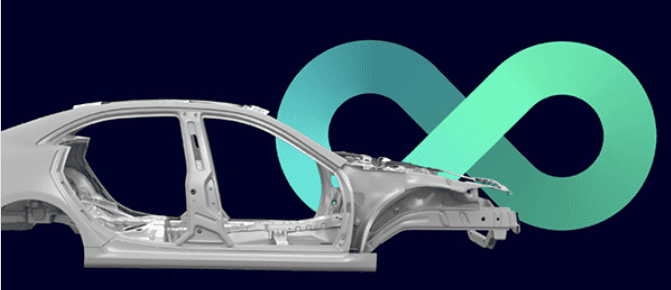
Drive production excellence with intelligent manufacturing
The automotive industry is facing unprecedented challenges, with rapid change and intense pressure to meet the demands of climate change, regulations, and consumers. Download Now
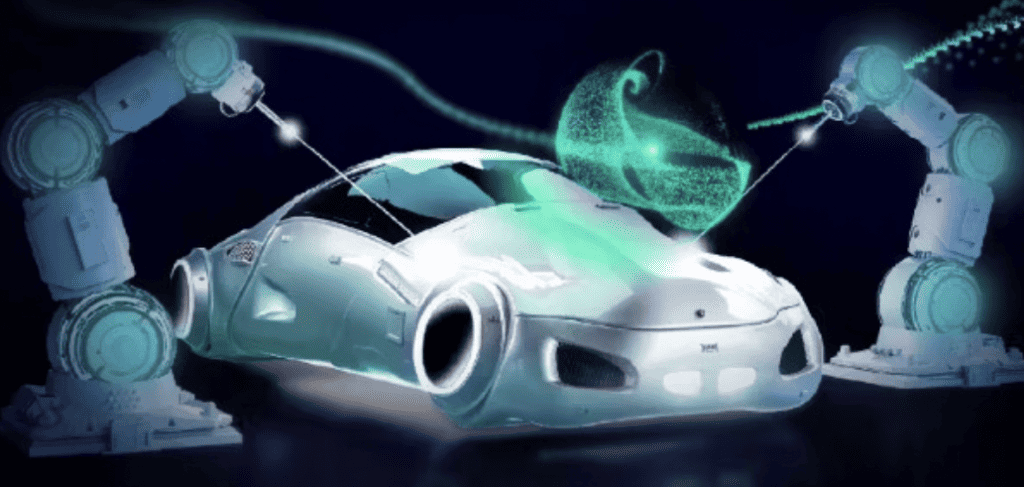
Modernize automotive factories with Siemens Smart Manufacturing solutions
Discover how automakers can transform their business with Smart Manufacturing solutions using state-of-the-art hardware and software to modernize production lines. Watch Now
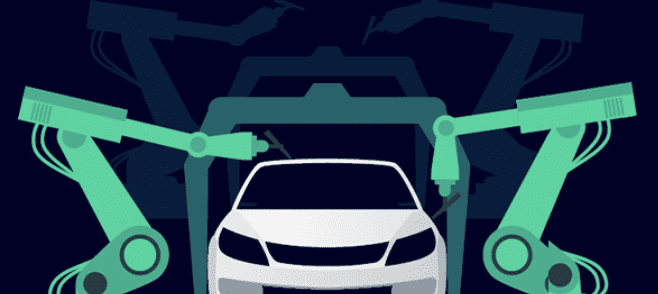
Virtual Manufacturing Development for the Automotive Industry
Companies in the automotive industry are pushing to develop the next generation of autonomous, electric, connected, and shared vehicles. View Now






